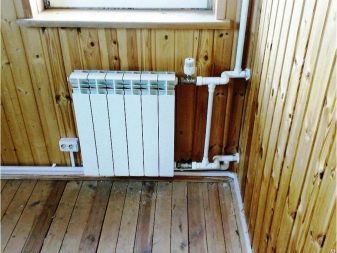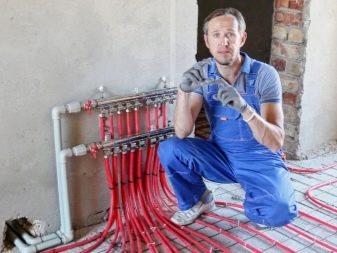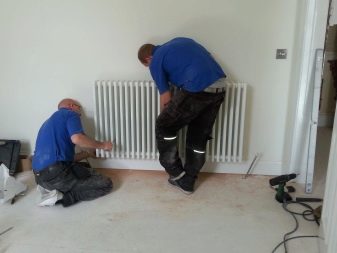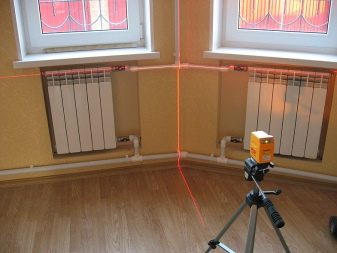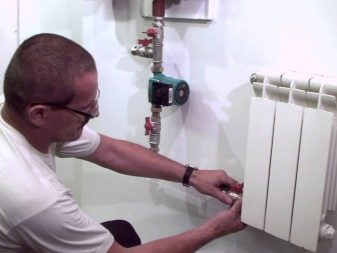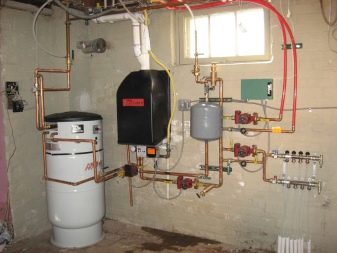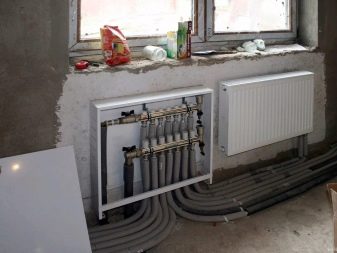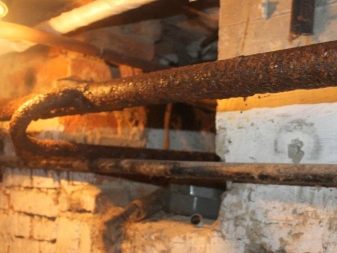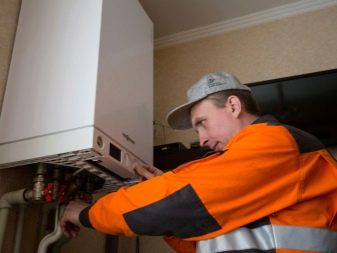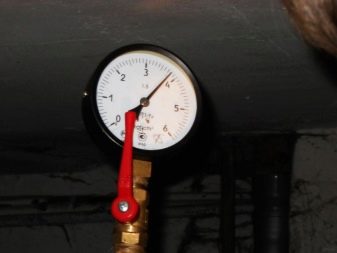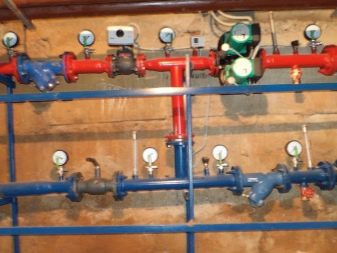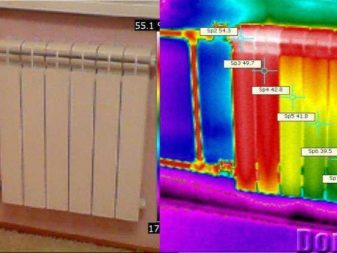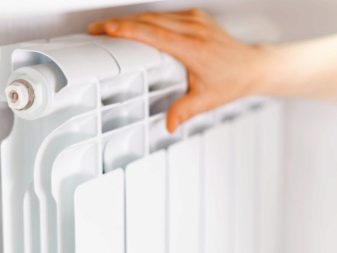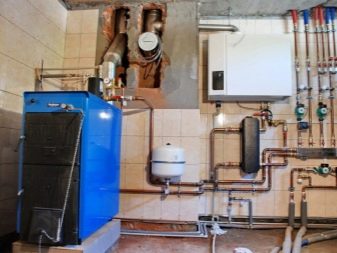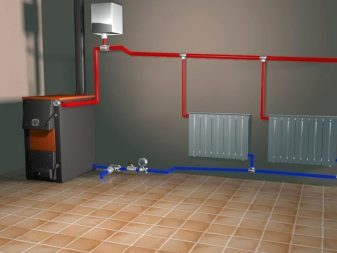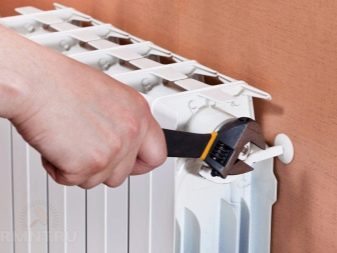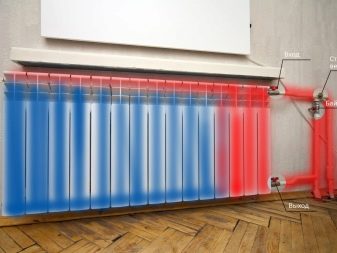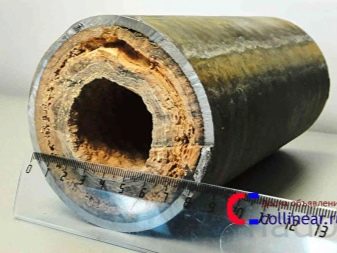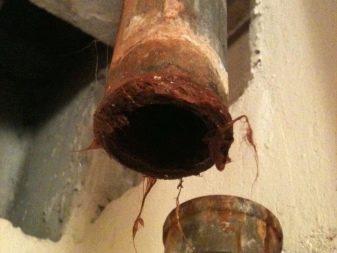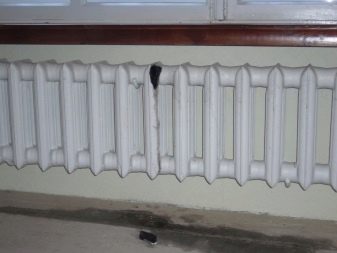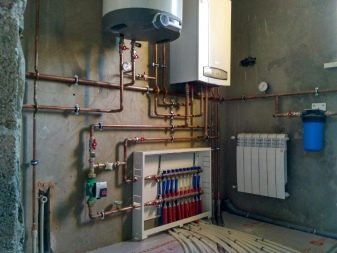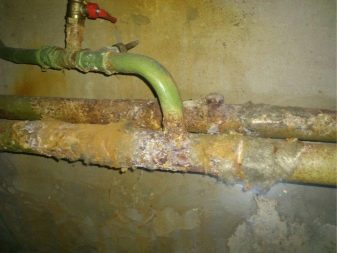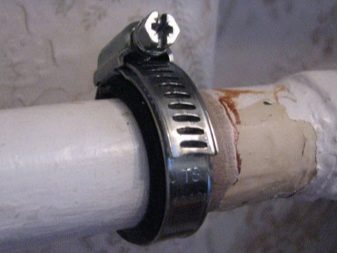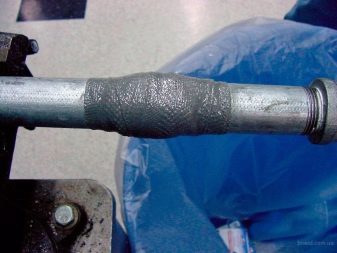Subtleties of repair of the heating system
The heating system is a complex mechanism, often failing for one reason or another. Features of the repair in this case for an apartment and a private house differ, in addition, the question of the degree of damage. It determines whether a major overhaul is needed or you can get by with local measures. The most frequent problem is leakage of pipes or improper functioning of the system, for example, pressure drops or air blockage. In this case, it is important to determine the source of the trouble and choose the appropriate solution.
Features of capital and current works
Depending on the magnitude of the problems, the amount of repair work is determined. In case of massive damages, a large-scale overhaul with replacement of damaged elements of the system is necessary.For minor troubles, you can get by repairing the problem area. The specifics of work for a private house and apartment also varies. In the first version, the entire heating system is at the complete disposal of the home owner and can be installed as needed. And in the second one, it is necessary to consult with the utilities that manage the heating of the whole house. During routine inspection, you need to pay attention to the heating shield, stove, network, thermal unit of a country house or in the country. It's all easy to do with your own hands.
In the apartment
Capital works in an apartment building have their own specifics. First of all, it is connected with the fact that the heating in the apartment is a part of the system, and intervention in it can lead to changes in the whole house. First, you must notify the utilities that are responsible for the heating in the house. It is desirable to attach to the application the fact of a breakdown recorded on a photo or video. Further, there is a discussion of possible options and the choice of the appropriate, taking into account possible consequences. At the same time, the independent overlap of the risers, except in cases of breakthrough, is strictly prohibited.
Employees of public services on arrival at the apartment make up the act, which states the following:
- probable cause of the accident;
- measures taken to restore the heating system;
- collateral damage: damage to the decoration of the apartment, furniture and more. It also looks around the apartment, located on the floor below.
Minor repairs occur along roughly the same scenario; only utility workers can block the heating riser. In this case, the damaged node is replaced and a corresponding act is drawn up.
In a private house
In case of small faults, replacement of the following components is possible: fittings, pipes, pump and other. If replacement of a part of a trunk is impossible, for example, it is walled up under the trim, it is possible, without breaking the entire wall, to put a tire on or to insert a piece of pipe using press fittings. They allow you to securely fix the pipe without using welding or soldering.
Overhaul is carried out in cases involving the following breakdowns and resulting solutions:
- replacement of the boiler;
- radiator replacement;
- replacement of the section or the entire pipeline in case of large-scale damage;
- replacement of individual components: pump, reserve tank and other;
- complete replacement of the heating system.
Depending on the circumstances, a major overhaul of heating in a private house can be of two types.
- Spontaneousassociated with an accidental breakdown. In this case, there may be a massive repair of heating elements or a complete replacement of the entire system. Often this is due to the rush, when the problem occurs either just before the heating season, or directly during it. To avoid such situations, regular preventive inspection of all elements of the system is necessary.
- Planned - replacement of the system which has fulfilled its lifetime or replacement with a more efficient one. In this case a plan is drawn up, the most suitable parts and materials are purchased. In this case, the timing of the work can stretch, and start better at the end of the heating season.
Routine inspection
In order for the heating system to work without accidental breakdowns, it should be regularly inspected and, if necessary, eliminated the defects.
Annual events include the following:
- inspection of the gas boiler;
- check automation;
- check the emergency system;
- inspection and cleaning of the chimney;
- inspection of the pipeline and radiators for violations of structural integrity.
The following measures are more rare, but no less mandatory:
- checking the system at full capacity under high pressure;
- flushing the system using special means;
- adjustment of automation units;
- replacement of waste nodes or parts.
The need and frequency of individual activities may vary depending on the circumstances. If water from a well or a well is used in the heating system, it is advisable to flush the system annually, but without reagents. In addition, if there is a plunger pump in the farm, it is better to conduct an overpressure test annually. And also it is worth paying attention to the specification for each individual unit, it specifies the procedure for carrying out prevention according to the manufacturer’s method.
Common Malfunctions
The heating system consists of many parts, each of which is under constant negative impact and can fail.Breakdowns are divided into two large categories: breakdowns in pipes and radiators, which are more often resolved on their own, and breakdowns of units that require in-depth knowledge of technology, in which case the appropriate specialist is most often called.
The problems that you can fix yourself are the following:
- heating radiators of varying degrees;
- pressure fluctuations;
- imbalance;
- stop circulation;
- air traffic jams;
- improper installation of radiators;
- pipe clogging;
- leaking pipes and radiators.
Heating problems
Often, radiators in the heating system of a private house or apartment do not heat at full strength, which is felt even when compared with the inlet pipeline. It is likely that the problem is in the accumulated air; the version is checked by opening special air vents. If a hissing sound is heard, it means that the problem is in the air; if there is water, then no. Then you should check the radiator taps, perhaps one of them is fully or partially blocked. If there is no problem, most likely, the radiator is clogged with debris. To check it is necessary to close the remaining radiators in the branch so that all pressure passes to the problem section.If the line is still hot, the last option is the hydraulic imbalance. To eliminate it, the remaining batteries of the branch remain closed for several days. If nothing helped, it's time to call the wizard.
Pressure fluctuations
Most often, pressure fluctuations occur when the system starts up, in which case it is necessary to wait several days for its self-regulation, during which air will escape and you need to add water to the system. A month later, the expansion tank is checked for compliance with the volume of water in the system. When it is small, a pressure surge may occur, which would trigger the emergency valve, but it would not solve the situation. In this case, the tank will have to be replaced with a larger one. If this measure has no effect, most likely, there is a leak in the system and you need to inspect the entire pipeline and each node.
Unbalance
Rare is a failure in which the return flow is hot. The reason lies in the absence of a check valve on the pump or its accessories to the units for floor heating. And also such a phenomenon can occur when the system is started up, when operating at full power, the pump “knocks down” the circulation.Another option is to incorrectly connect the supply / return hoses if they are interchanged.
No circulation
This is possible for several reasons. The first is the air that has accumulated in the system; it must be lowered. The second - the faucet on one of the radiators is closed. The third one is clogged with one of the filters, for example, in front of the boiler or pump. These three options are correct in 90% of cases, the rest need a master.
Air traffic jams
Traffic jams are often the cause of other problems and manifest themselves in other disruptions in the operation of the heating system, for example, during a cold radiator, circulation problems. This phenomenon is the main cause of a number of problems and requires separate lighting.
The reasons for the accumulation of air can be the following:
- as a result of rapid descent and filling of the coolant;
- oxygen emitted by water during heating;
- improper operation of the expansion tank;
- leakage in various assemblies or pipelines and other reasons.
A separate symptom of the accumulation of air are gurgling sounds. If the appearance of air plugs has become cyclical, it is worthwhile to install automatic air vent valves in such places.Especially often the accumulation of air is observed in residents of the upper floors in apartment buildings at the beginning of the heating season.
Incorrectly installed radiators
Usually, this problem arises due to the installation of the radiator, contrary to the instructions of the instructions, for example, not on all the brackets provided, deformation of the product may occur, which will cause interruptions in the operation of a different heating system. In this case, there are two options: re-correct installation, if it does not help due to serious deformation of the radiator, then you will need to replace it.
Pipe clogging
During long-term operation, dirt, scale, and mineral salts are deposited in the pipeline. As a result, the permeability of the system and the efficiency of its work are reduced. In addition, such pipes become emergency dangerous, and the best option is to replace them, without waiting for an emergency breakthrough. Especially often this problem occurs in the private sector, where the water is often too hard. In this case, you should use special tools to reduce the acid-base balance of water before it is poured into the system.The inlet filter will also contribute to the durability of the pipeline.
Leak pipes and radiators
This problem is often formed in places weakened by corrosion, or if the elements of the system are not properly connected, then they can be localized at any junction. To eliminate them, clamps are used as a temporary measure. A piece of soft rubber, clamped with a wire cord, fits. Another option is to apply a cloth impregnated with epoxy glue. You can use heat-resistant sealant or "cold welding". But any of these techniques, except for a quality clamp, is designed for 1-2 seasons, after which it is necessary to make a full repair of the site.
Troubleshooting Tips
Radiators
The causes of problems in radiators are most often the following:
- improper installation or poor quality product. In the first case, reinstallation will help, in the second - only the replacement;
- radiators are not designed for the harsh conditions in which they are operated. You can either facilitate the operation of the heating system, or buy new radiators;
- corrosion processes of varying degrees. If these are small leaks due to rust at the joints, they can be fixed.If it is through corrosion from wear - it's time to change the radiators;
- wear gaskets, nipple leakage and more. All small parts are subject to replacement, only to find parts really only to radiators from well-known manufacturers.
In radiators it all depends on the degree of damage. If they are massive, you only need to change, if local, it is worthwhile to think that it is more profitable: to repair and prolong the operation or immediately change.
Boilers
Independent repair of boilers due to their complexity is not recommended. With this problem it is better to contact a specialist. The inept work can lead to various negative consequences, ranging from stronger damage to equipment and ending with a danger to the lives of residents.
The scope of work that the owner can carry out personally is clearly regulated and consists of the following:
- adjustment of working temperature;
- gas on / off;
- air removal.
All other manipulations should be carried out only by an expert. The same rule is relevant for circulating pumps, repairing them on their own without specialized knowledge is unlikely to bring success.A broken gas boiler is flammable and explosive, and an electric one is capable of electric shock. Self-repair pumps often become unusable.
Pipes
The most common cause of pipeline leakage is breakdown corrosion or a breakthrough in a place weakened by its effect. In aggressive environments: hard water, high temperature and pressure lead to accelerated wear of pipes. Replacing individual sections of the pipeline or patch leaks - this is a simple exercise. Problems begin with the camouflage of pipes under the finishing materials. In this regard, when installing them, a well-thought-out system of revision and replacement of individual sections should be established, for example, if pipes are wrapped in polypropylene propylene, it will be possible to dismantle them from the wall without breaking the finish.
The procedure for the repair of pipes is as follows:
- a collar with a seal of the size corresponding to the diameter of the leak;
- the heating system stops: the boiler and pump are turned off, all valves are shut off, water is drained;
- access to the problem area is provided, if necessary removes the finish layer;
- reeling is applied, and a clamp is installed on top.
What are the main mistakes in the installation of home heating, see the following video.


